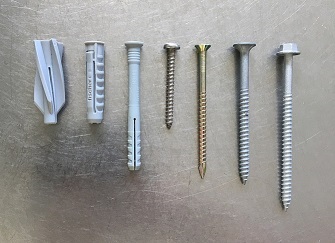
Autoclaved Aerated Concrete, also known as AAC or aircrete, is a green precast building material present in the global market for over 70 years and is extensively used in residential, commercial and industrial construction. AAC is a well-established building material, which has rapidly gained worldwide market share from conventional building materials because of its superior characteristics. This eco-friendly building material is made from these natural raw materials: sand, cement, lime, gypsum, aluminium powder and water. This mix creates an aerated concrete providing insulation, structure and fire protection in one lightweight product.
A short video about AAC
Our standard density block is 4.4kg per m3. Our standard size of block is 400 x 240 x 200 (length x width x height) which gives a weight per block of 8.36kg. For comparison a concrete block of those dimensions would weigh around 57kg. So approximately one sixth the weight.
The R-Value Calculation begins with the Lambda (λ) values, combined with the thickness of the product which gives the thermal resistance - or R value - of each element in a structure. R value is a measure of thermal resistance. The higher the R value of any element, the better its ability to resist the transmission of heat. Aircrete block walls correctly constructed using blocks of 400 x 240 x 200 (length x width x height) and with a suitable external render give an approximate R-value of between 3.2 and 3.4
It has been much the same since colonisation over 150 years ago. A wooden framework with an exterior cladding to keep out the weather, a cavity between for thermal insulation, and an internal lining. To meet current building codes the wooden framing is generally constructed of treated pinus radiata, the cavity is filled with an insulation product and the lining is plasterboard.
Most of what we produce is exported overseas as raw, peeled logs. We then import building timber that has been milled and treated with chemicals to resist rot caused by fungus and wood-boring pest invasion.
The AAC construction method provides a solid masonry external wall 240mm thick. The aerated concrete creates the insulation within the wall. While a plaster finish is required by current building codes to ensure weather-tightness, moisture ingress does not pose any risk to the integrity of the wall as it will not retain moisture and cannot rot. AAC is also fire proof, water proof, pest and vermin proof and highly durable in earthquakes.
In Europe, you can find many buildings made with AAC that are over 80 years of age and they are still sound, confirming the longevity and durability of the product.
We use specifically designed fasteners. We can advise your builder, kitchen or bathroom supplier on the best fasteners to use. Those shown below include fasteners on the left for attaching fittings such as kitchen and bathroom ware and hanging heavy objects on a wall. The two on the right are typically used for screwing shutters to the wall before the bond beam is poured.

For more in depth reading the links below contain further reading and information about AAC from independant sources.